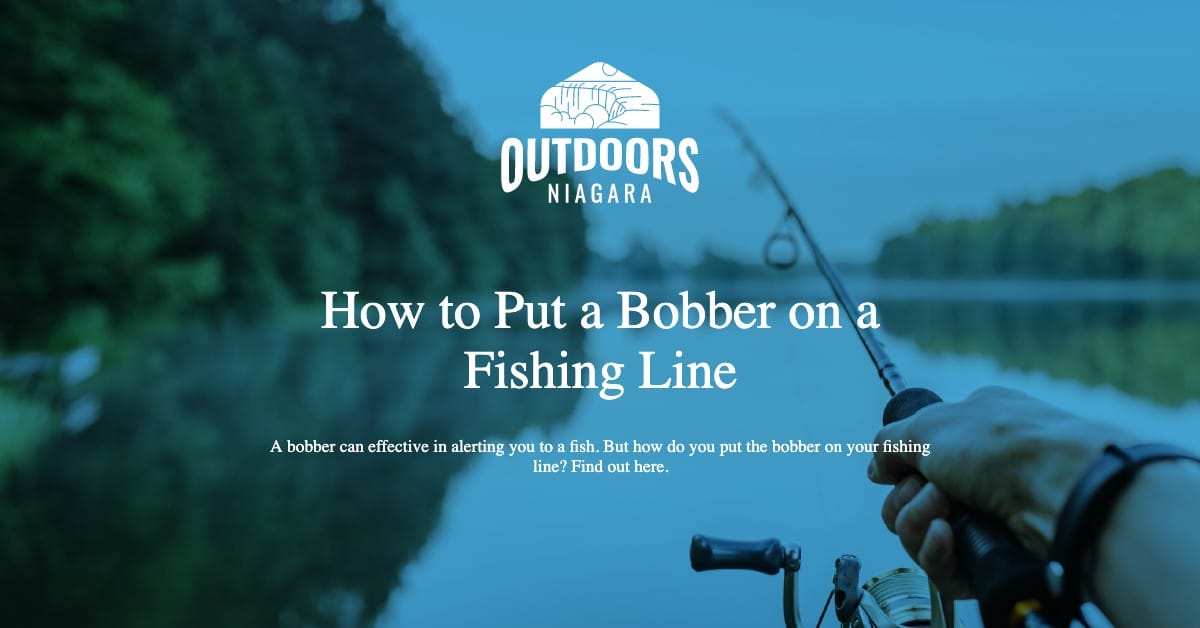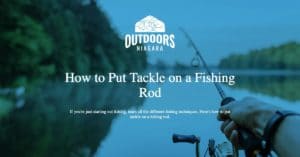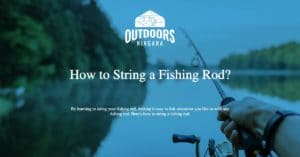If you have ever been fishing, you will know how effective a bobber can alert you to a fish on your hook.
If, however, you are planning your first fishing trip and would like to know more about the best tips and tricks to catch fish, this article is for you.
Join us as we take you through the ins and outs of fishing and include a handy how-to guide on putting a bobber on your fishing rod line.
Contents
How to Attach a Bobber to a Fishing Line
Before you cast your line and wait for a bite, there are things to remember.
From attaching a hook, to eventually casting off, we will cover the steps you need to take, including attaching a bobber to your fishing line.
If you have never attempted to hook your line, now is the time to learn. Attaching your bobber requires no fundamental skills.
The general order of things on a fishing line are the hook, the sinker, and the bobber.
Step #1: Line your reel and place your tie your hook at the end of the fishing line. Once the hook is in place, add your bullet sinker to the line, roughly four finger-widths up from your hook. This will help sink the line, no matter how lightweight or heavy your bait is.
Step #2: Once your hook and bullet sinker is on the line, measure roughly 30 inches up from the hook. This is where you will be attaching your bobber to the approximate depth at which fish primarily feed. Your tasty bait offering is more likely to be nabbed at this depth.
Step #3: The bobber has a small button on the base of one side. Pushing this in exposes a hook attached to the fishing line to make the bait sink and the bobber move when a fish takes the bait. To attach your bobber, you can use a basic slip, wire loop, or finger loop.
Step #4: Once your bobber is in place, using either a basic slip or wire loop, bait your hook, cast your reel, and sit back and wait. The bobber should move when a fish is nibbling at your bait or on your hook. Carefully reel it in, remove the hook safely from the fish’s mouth, and toss it back into the water.
More on Attaching the Bobber
If you want to attach the red and white ball bobber you do so using the two hooks that are hidden on the top and bottom of the bobber.
First, strip off enough line for your hook and sinker. Determine how far up on the line you want the bobber.
If you are fishing in deeper water you want the bobber to be a fair distance from the hook.
Next, press down the button on the top of the bobber, and as you do, the bottom hook will appear on the bottom of the bobber.
Wrap your line around the hook so that when released, the hook holds the line next to the bobber.
Now, run the pole end of the line, up the side of the bobber.
Place your finger over the bottom hook and gently press the button on the top of the bobber.
You want to press the edge of the button and not the center.
The top hook will appear, and you can run the line that comes from the top of the side/bottom of the bobber up and through the hook.
When you release the button, the line will run to the pole, down the side of the bobber and then down to the hook.
The nice thing about this type of bobber is that you can adjust its position as needed.
Bobbers are not meant to be a fixed part of your rigging. They are designed to remain movable but secure.
Once you attach them to the line, they stay fixed until you release the mechanism that holds them in place.
Once you do, you can adjust the bobber or remove it.
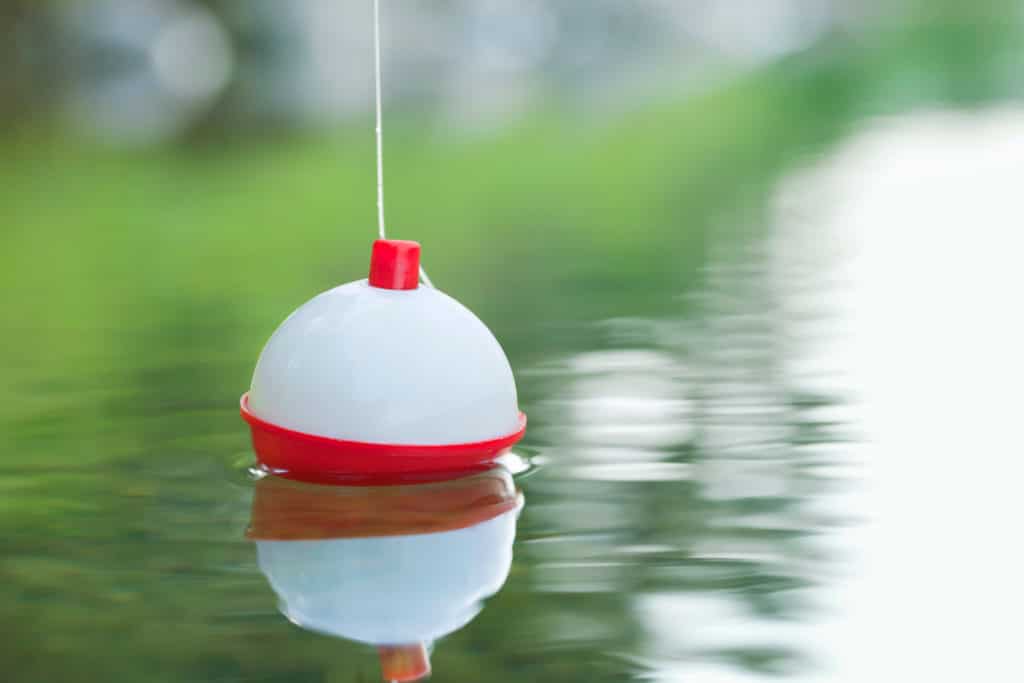
What is a Bobber?
A bobber, sometimes called a fishing float, is a floating ball-shaped object that floats on the water’s surface and moves or “bobs” when a fish is on your hook.
Fishing is a relaxing activity, and using a bobber on your line can help you relax even more by allowing you to wedge your reel and watch the bobber rather than hold the line to feel if anything is on your hook.
Adding a bobber to your fishing line is easy, requires no fundamental skills, and can be done by even the most beginner anglers, including children.
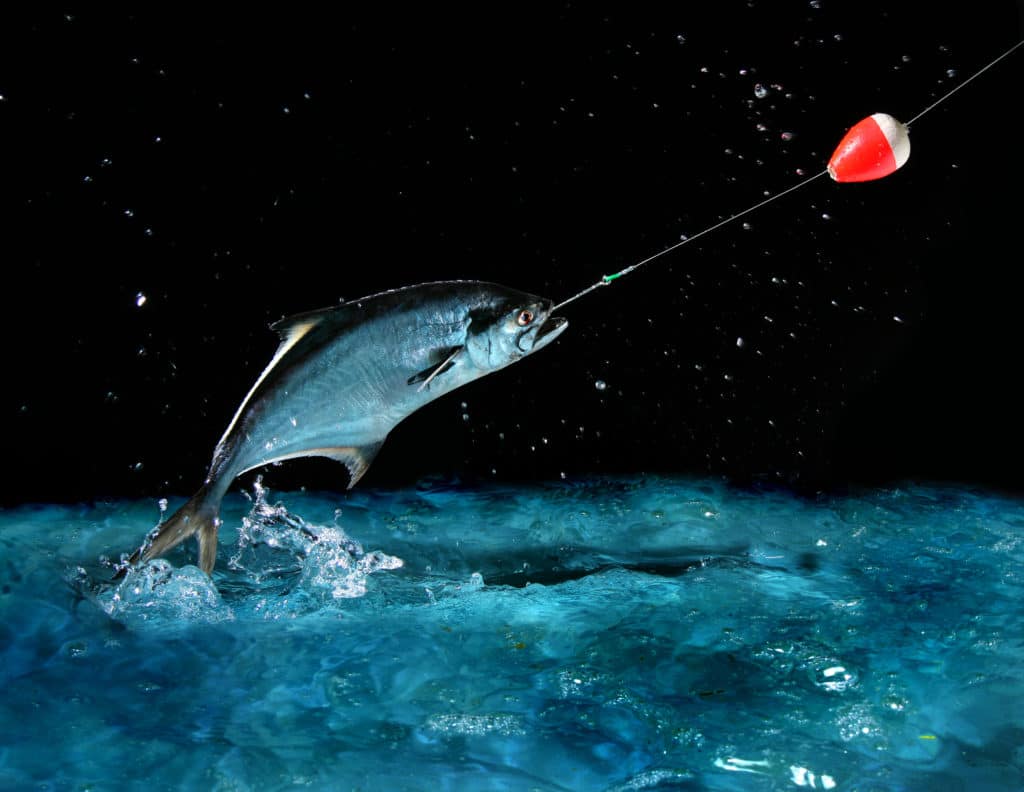
Benefits of Using a Bobber
A bobber can significantly increase your chances of catching a fish. Here are a few benefits or advantages to using a bobber on your fishing line:
- Bobbers are available in various colors, shapes, and sizes, depending on the type of fishing you will be doing. This includes fresh or saltwater fishing.
- They help detect even the slightest bites from fish that are either nibbling on your bait or have taken it entirely and are now on your hook.
- Bobbers help control the depth at which your bait will be suspended. Fish generally feed in the area directly below the surface and a bobber will stop for baited hook from going too deep into the water.
- Bobbers are great for fresh or saltwater fishing. Choose the bobber according to the type of water you will be fishing in.
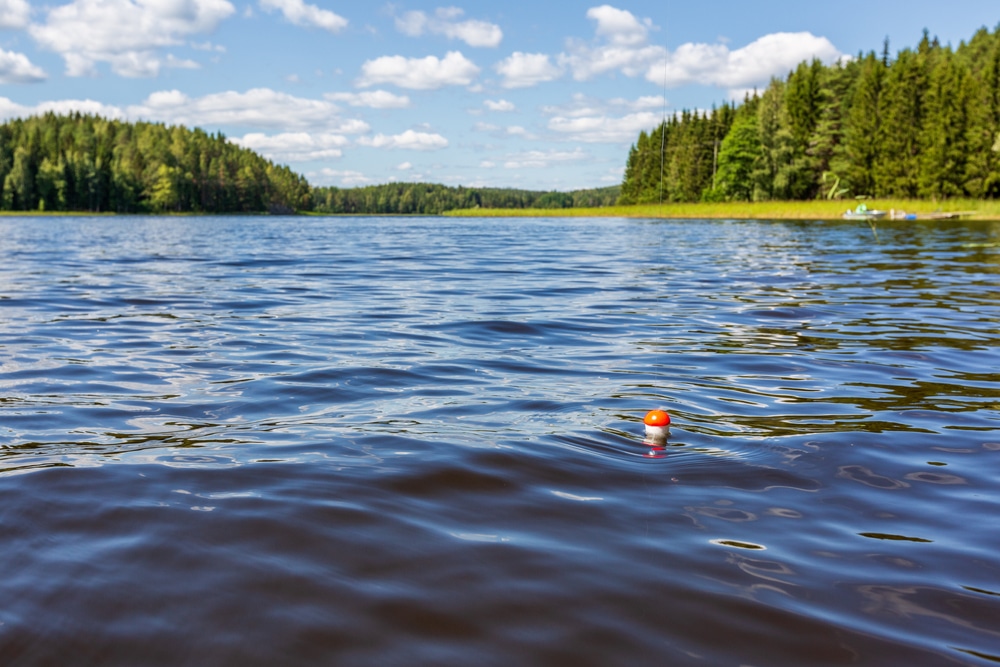
How to Choose a Bobber
Bobbers are available in an assortment of shapes, colors, and sizes.
Bobbers are chosen depending on the weight of your fishing line, the weight of the fish you are aiming to catch, and of course, the waters you will be fishing in.
There are different types of bobbers for fresh and saltwater fishing, and they are not interchangeable.
Choose a light bobber for the fish to pull underwater, signaling that you have a fish on your hook.
While a bobber’s most popular shape and color is a red and white ball, anglers can use many shapes.
If you are fishing in saltwater, a pencil-shaped bobber might be a better bet as it extends into the water, can be used in deep seas, and can catch larger fish.
If this will be your first fishing trip, you can read online fishing blogs or speak to an angler you may know for advice on which bobber is the best to use in specific fishing areas and how to catch different fish.
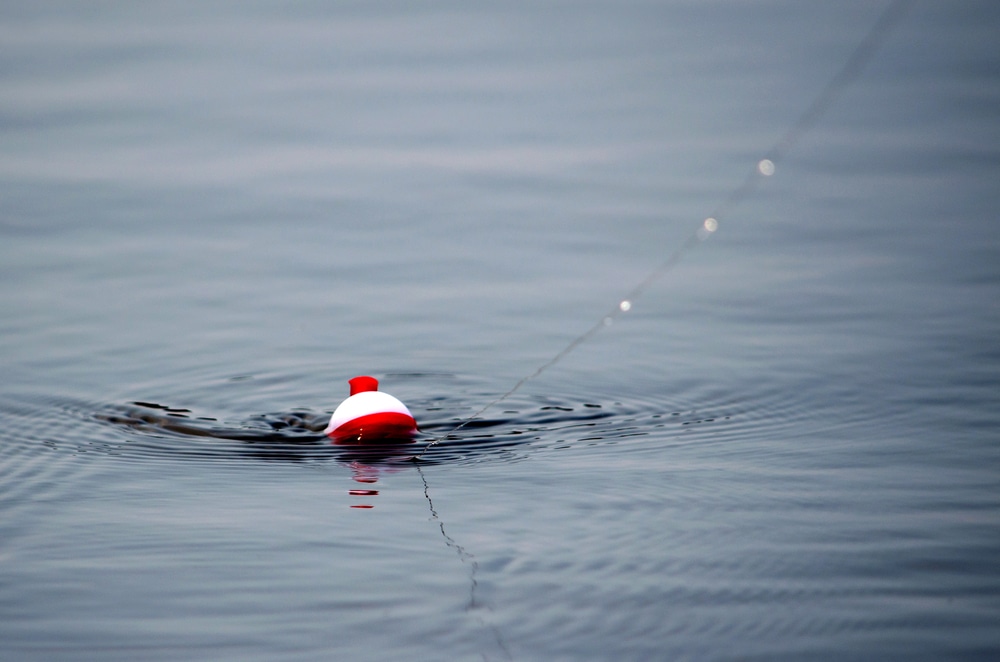
Types of Bobbers
There are many types of bobbers. Bobbers are also referred to as floats.
Some are made of plastic, some may be comprised of a mix of materials, and they come in a variety of shapes.
Many of us are familiar with the red and white plastic ball bobbers, but there are also cigar floats, slip bobbers, and fixed bobbers too.
For fishing in shallow waters, a regular bobber is ideal.
The more commonly used bobbers are:
Pencil-style bobber
These bobbers are super lightweight and can detect even the slightest movements caused by a fishing nibbling at the bait.
Anglers can use pencil bobbers effectively in deeper waters.
Once a fish is on your hook, the pencil bobber, essentially a pencil-shaped piece of plastic, will be pulled underwater, signaling that you can start reeling it in.
Pencil bobbers are available in all colors.
Transparent bobber
A transparent bobber looks more like an air bubble than a bobber. It is less likely to be detected by fish and scare them off.
Transparent bobbers can be used in all water types, including deep-water fishing.
Take note of the fishing conditions by chatting to a fishing expert before heading out into deep waters.
Slip bobber
The slip bobber (also called spring bobber) is the ideal bobber for deep water to deep-sea fishing.
A slip bobber slides up and down the line with the waves, and much like the pencil-style bobber, it is pulled underwater when a fish has taken the bait and is on your hook.
They are available in all colors. These are often referred to as slides.
Instead of being fixed in one spot on the line, they are free to slide up and down the line based on how deep the hook goes.
They have a fixed stop point which you tie to your line using a bit of line as a bobber stop.
Once the bobber hits the bobber stop, it cannot flow up the line anymore and is fixed.
The bobber will stay at the water’s surface making it an excellent option for fishing varying levels of water.
What Type of Bobber To Use and When
If you are fishing for panfish or trout, you can use a pencil or waggler bobber.
Both will provide excellent results for trout, panfish, bluegill, and crappie.
If you are targeting bass or trout you want to use an in-line slider bobber or float.
For walleye, it is best to go with an in-line slider also.
For a broader mix of fish – trout, and panfish, you can use an oval slider or fixed slider float.
If you are fishing in finesse style, a pencil or waggler bobber is a good choice.
In-line and oval sliders or fixed sliders work well for jigs when not fishing in finesse style.
For larger spooks, you might need an oval slider or fixed slider.
For deeper water, 5-20 foot depths – use a cigar slider.
For shallow water fishing under three feet in depth, a round fixed slider is ideal.
You want to be strategic in which type of bobber you choose.
You want to decide that based on the type of fish you want to target.
Some bobbers are better for a wider selection of fish.
Some are better for shallow water versus deep water.
Bobbers come in different colors and that can play a role too.
How Far Should the bobber Be from the Hook?
The distance and placement of the bobber on the line and from the hook will depend on two things.
The first is how deep your hook needs to be in the water.
If you are baited for bottom fishing, then the bobber will need to be farther away than if you are fishing in shallow water.
For Shallow water, fishing place the bobber anywhere from 8 inches to several feet away from the hook.
For deeper water, place the bobber five or more feet from the hook.
The farther from the hook the bobber is the more difficult it is to cast the line for long distances.
The second piece of information you need to know for deciding on bobber placement is how deep in the water you want to fish.
Even if you are fishing in deep water, but you want your bait to remain on the surface, you’d place the bobber eight inches to a foot from the hook. A little longer if the bait is not heavy.
A short ratio from hook to bobber is a good setup for top water fishing.
With slip bobbers, the bobber can be free to float to depths as deep as you need.
The bobber stop is what catches the bobber but otherwise, it is free to float on the water’s surface at a range of depths.
For most fishing situations, you want the bobber 8inches to 1.5 feet from the hook.
If you are fishing in deeper water, you can switch to a slip float rather than increasing the distance between the hook and bobber.
Is it Better to Fish Without A Bobber?
A bobber or float is there to let you know you have a bit. You don’t need a bobber with more aggressive fish, such as Northern Pike.
You can also use high visibility (high vis) line which you can track if a fish should take your bait but not aggressively strike.
The line will veer away from the line tip in the water.
Do you need a bobber? No. They are handy if you want to fish multiple lines. Bobbers are handy also for smaller fish.
How Do You Set The Hook with A Bobber?
Once the bobber starts to bob, you lift the rod tip with a short jerk and set the hook.
Usually, you would set the hook as soon as you feel the fish bite.
A bobber is a visual cue that there is action at the hook.
When you fish with a bobber you have both the feel of the bite and the visual cue of the bobber dipping beneath the water.
Setting the hook is easy. It is a lifting of the rod’s tip, with a short amount of force.
The force drives the hook into the jaw and then traps the fish. Once the hook is set, the fight with the fish begins.
For larger fish, the weight will suddenly increase, and the action will become more frantic.
For smaller fish, the tension on the line will become more frantic.
With some species of fish, such as silver salmon, the fight is so severe that the excitement of battling the fish is intense.
Setting the hook will take some practice.
The fist tug on the line may not be the best opportunity to set the hook.
You want to wait until the fish has totally taken the hook.
If the bobber is dancing around on the surface, wait.
When the bobber dips beneath the surface, set the hook.
Sometimes, fish play with their food.
They may nibble on the bait or taste it.
They may decide to leave it alone or then decide to take the bait.
When that happens the nibbling stops, the bobber stops bouncing on the surface and begins to dip beneath the water.
That is the time to set the hook.
Conclusion
Fishing should be a relaxing activity unless you are fishing in a competition or for sport.
Using a bobber on your fishing line can help you detect that a fish has taken the bait without physically holding the rod and line at all times.
For more information on which bobbers to use with which type of fishing line and which fishing spots to use for a fun fishing experience, speak to local anglers or even a sales rep at your local fishing supply store for advice.
There is a wide variety of bobber rigs to choose from.
Now that you know how to attach a bobber to your fishing line, you can grab your rod and get fishing.

